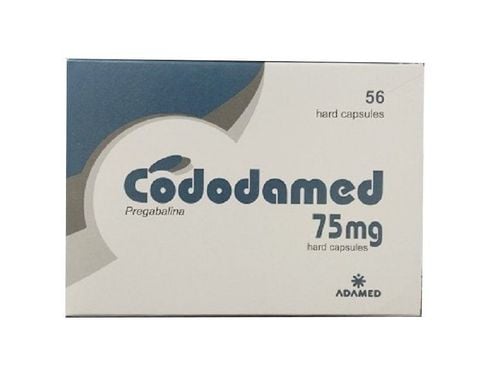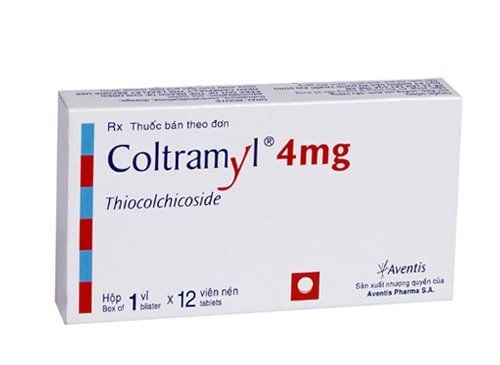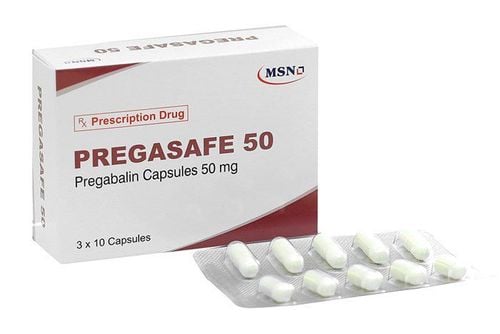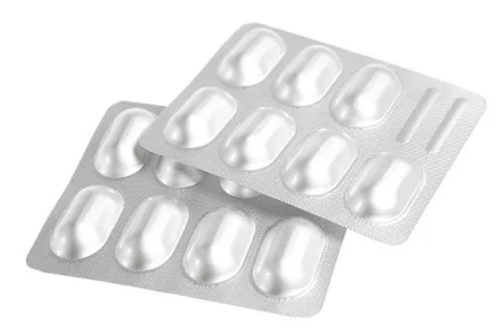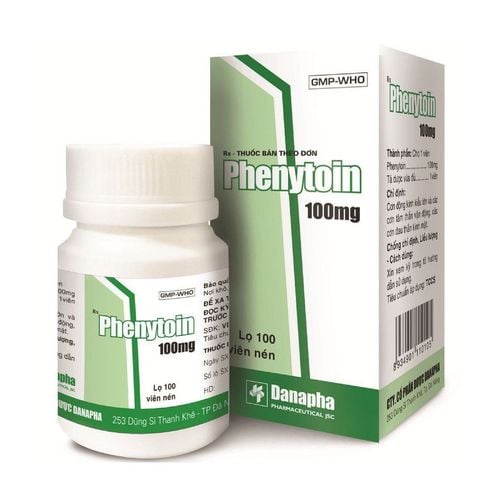This is an automatically translated article.
Nuradre is a prescription drug indicated in the monotherapy of partial seizures with or without secondary generalization in adults and children over 12 years of age. In addition, the drug can also be used as adjuvant treatment of partial seizures in children from 3 years of age or pain due to inflammation of the peripheral nerves.
1. What is Nuradre?
Nuradre medicine has the main ingredient is Gabapentin 400mg, made in capsule form.
Gabapentin is a structural analogue of gamma-aminobutyric acid (GABA). But it is not a GABA receptor agonist or antagonist. In vitro studies using the radiolabelled drug Gabapentin have revealed a novel peptide binding site in rat brain tissue, including the neocortex and in the hippocampal region, which may be related related to the anticonvulsant effect of the drug.
Gabapentin helps to slightly reduce the release of monoamine neurotransmitters in vitro. In animals, Gabapentin can easily enter the brain and prevent seizures caused by electric shock or other chemical agents.
2. Uses of medicine Nuradre
Nuradre is indicated for use in the following cases:
Monotherapy in the treatment of partial seizures with or without secondary generalization in adults and children over 12 years of age. Adjunctive treatment of partial seizures with or without secondary generalization in children from 3 years of age. Treatment of pain caused by inflammation of the peripheral nerves (after shingles, diabetes...) or sciatica ... for patients 18 years of age and older. Nuradre should not be used in the following cases:
Patients with a history of hypersensitivity to Gabapentin or any of its ingredients.
3. Dosage of the drug Nuradre
How to use: Nuradre is indicated for oral use. This medicine can be taken with or without meals.
Dosage:
Antiepileptic for adults and children over 12 years old:
The usual effective dose is from 900mg - 1800mg per day. Can start with 300mg or 400mg capsules, 3 times on the first day. Or use 300mg - 400mg, 1 time in the first day; 300mg - 400mg, 2 times in the 2nd day; 300mg - 400mg, 3 times on the 3rd day. Then the dose can be increased step by step to achieve the usual therapeutic effect of 900 - 1800mg, the maximum use of this drug is not more than 2400mg/day divided into 3 oral doses, at intervals no more than 12 hours at a time. When using high doses can be divided into 4 doses. There have been a few cases where a dose of 3600 mg/day was also used for a relatively short period of time and was well tolerated. For patients with renal impairment: The dose should be adjusted for patients with renal impairment depending on the creatinine clearance as follows:
Creatinine clearance 50 - 70ml/min, total dose is 600 - 1200mg, divided into 3 times. Creatinine clearance 30 - 49ml/min, 300-600mg orally, divided into 3 doses. Creatinine clearance 15 - 29ml/min, 300mg orally, in 3 divided doses Creatinine clearance <15ml/min, 300mg every other day, in 3 divided doses. For hemodialysis: Initial loading dose is 300-400mg then need to reduce to 200-300mg every 4 hours on dialysis. Children from 6 to 12 years old:
First day: Take 10mg/kg/day, divided into 3 times. Second day: Take 20mg/kg/day, divided into 3 times. The third day: Take 25mg - 35mg/day, divided into 3 times. The maintenance dose is 900mg/day for children weighing 26kg - 36kg and 1200mg/day for children weighing 37kg - 50kg. The total daily dose is usually divided into 3 doses. Children from 3 to 6 years old:
First dose: Take 10mg - 15mg/kg/day, divided into 3 times. The dose can then be increased over 3 days to reach a dose of 25-30mg/kg/day for children 3 - 4 years old or 25-30mg/day for children 5 years old. The total daily dose is divided into 3 doses. Treatment of neuropathic pain in patients 18 years of age and older: The dose should not exceed 1800mg/day, divided into 3 times, the initial dose determination method is similar to that for epilepsy in adults. The dose can then be increased to a maximum of 1800 mg/day.
Overdose:
There have been no reports of life-threatening acute poisoning of this drug with doses up to 49g. Overdose symptoms include dizziness, double vision, difficulty speaking, drowsiness, lethargy, and mild diarrhea. Supportive treatment can lead to a full recovery.
4. Side effects of the drug Nuradre
When using the drug Nuradre you may encounter unwanted effects:
Fatigue, headache, dizziness, drowsiness, tremor, nystagmus. Abdominal pain, nausea, vomiting, diarrhea. Muscle pain, weight gain, confusion, depression. Decreased vision, double vision, cough, sore throat, rhinitis. Skin rash, fish eggs. When experiencing side effects of the drug, it is necessary to stop using it and notify the doctor or go to the nearest medical facility for timely treatment.
5. Things to note about the drug Nuradre
Before using the drug, you need to inform your doctor about the history of drug allergies and accompanying diseases. Gabapentin can be used in combination with other antiepileptic drugs without regard to changes in gabapentin concentrations or plasma concentrations of other antiepileptic agents. Any dose reduction, discontinuation, or substitution with other anticonvulsants should be done gradually over at least 1 week in order to avoid recurrent seizures due to stop the drug suddenly. You should take the medicine at the same time each day to maintain a stable blood level of Nuradre. Nuradre should be used with caution in people with a history of mental disorders, people with renal failure, those on hemodialysis, or those who operate vehicles or machines. Pregnancy: This drug should only be used during pregnancy when the potential benefits outweigh the potential risks to the fetus. Lactation: This drug may pass into breast milk, the effect on the nursing infant is unknown. Therefore, the drug should only be used in women during lactation when absolutely necessary.
6. Drug interactions
Concomitant use with antacids containing aluminum salts and magnesium salts can reduce the bioavailability of Gabapentin by about 20%, so the drug should be taken at least 2 hours apart. The renal clearance of Gabapentin is not affected by Probenecid. Cimetidine may slightly decrease the clearance of gabapentin but is of no clinical significance. Hopefully, with the above information, you know what Nuradre is and how to use it. Note that this is a prescription drug, patients do not arbitrarily use to ensure safety for health.




